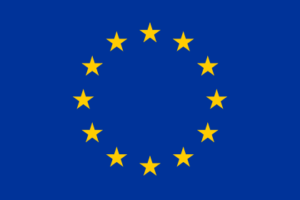Authors: Kirsty Wallis, Thomas Kaarsted, Simon Worthington, Alisa Martek and Dragana Janković.
Library Infrastructures and Citizen Science
Section Editor Kirsty Wallis
v1.0, 2023
Series: Citizen Science for Research Libraries — A Guide
DOI: 10.25815/tz0x‑m353
SOCIAL MEDIA IN LIBRARIES AND THEIR USE IN SUPPORTING RESEARCH
By Dr Grzegorz Gmiterek (ORCID iD: 0000-0002-5692-1824), Faculty of Journalism, Information and Book Studies, University of Warsaw.
Article DOI: 10.25815/cvcp-hx93
Modern libraries — not only academic, but also public libraries — have the infrastructure and the information competencies to be the centre of activities related to citizen science and open science. Libraries are one of the important links in the chain of processing large data resources, which they organize and manage on a daily basis in a professional manner (including through social media). Social media tools provide effective opportunities to share information (metadata) about traditional and digital documents with web users, but often also the content of these documents. This was vividly demonstrated during the pandemic period, when academic libraries had to meet the challenges of providing information and library services via networked tools overnight. The pandemic and the necessary precautions that it brought about made remote services one of the key elements in the functioning of these institutions, and social media (including Facebook in particular) important tools for communicating with users.
Which social media tools do libraries use? The answer to this question is not easy. Libraries should focus on those sites that their users access on a daily basis. With this approach, librarians can be where the users of their services are. This is important because libraries have the opportunity to establish closer contact with both current and potential users. Social media is also a chance to offer them the opportunity to use library resources, digital repositories and libraries, but also collections made available through sites such as YouTube, Flickr, Pinterest, SlideShare, etc. Moreover, these tools can also be useful to find people who would like to engage in collaborative research activities and ventures.
In academic libraries, citizen science can also take the form of crowdsourcing, enabling user participation in tasks or activities or, also based on social media functionality, for example, the collaborative creation of document collections on a social networking site to preserve cultural heritage (e.g., the Australian National Library’s 2006-2008 project using Flickr to collect images about Australia) or the collaborative creation and completion of information (including metadata) on documents shared by libraries (e.g., The Commons project on Flickr, initiated by the Library of Congress in 2008). Although undoubtedly, there are many more examples of crowdsourcing in libraries in relation to the construction by users and librarians of thematic, open archives and digital repositories, the creation and correction of databases, the transcription of texts and the processing of scanned documents. In all these endeavours, social media play an important role. If not as a platform for action itself, they are at least a place to inform users about a particular project. What many projects of this type have in common is that libraries play the role of coordinators, organising cooperation between users and employees of these institutions.
Bibliography
User Type
- Educator/museum
- Researcher/research institution
Resource type
- Case studies
Research Field



